A Wining Cost Estimate
That Helps You To Win More Roofing Construction Projects

To gain a better understanding of roofing materials, you must familiarize yourself with the advantages and disadvantages of different types. In order to estimate the cost of roofing installation for a new home, you need to know which roofing material suits your needs. The sub-sections, such as asphalt shingles, metal roofing, tile roofing, slate roofing, and wood shake roofing, offer a range of options for durability, aesthetics, and affordability.
Asphalt Roof Shingles are a great roofing option. They’re affordable and strong! They have a fiberglass mat that’s covered in asphalt, making them watertight. Plus, they come in many colors and textures – perfect for customizing any home. They can be put on steep-sloped roofs and last up to 30 years with good care. Fire resistance is another perk. Keep in mind, though, that ventilation is a must to extend their lifespan!
Metal roofing may sound like something from a sci-fi movie, but it’s really durable and fashionable for your house.
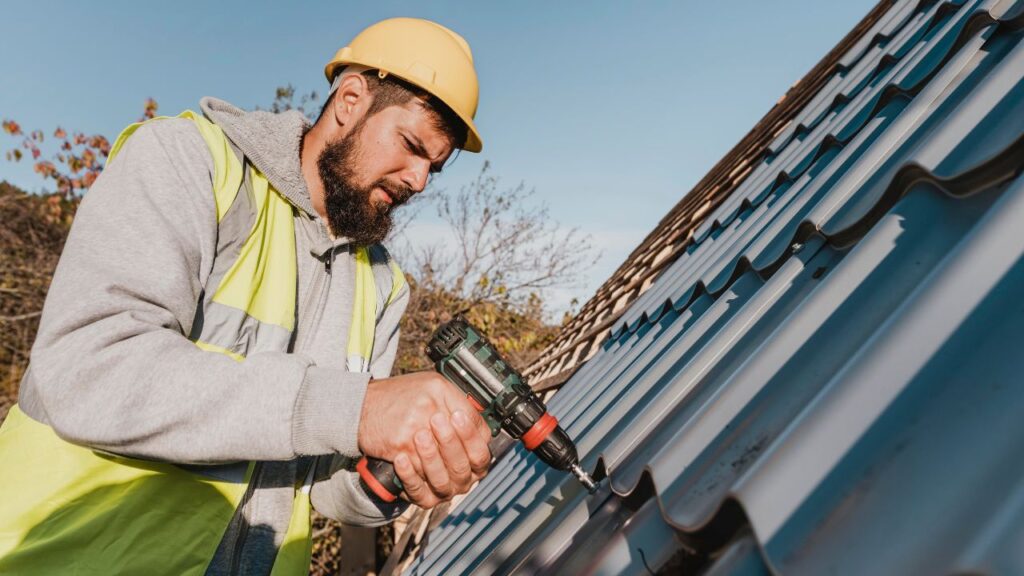
Metal roofing is a popular choice for its durability and longevity. It’s made from various types of metals, such as copper, aluminum, steel, and zinc. Metal roofs can survive tough weather, like heavy rain, high winds, and hail. Plus, they come in many colors and designs, making them attractive.
A table with useful info on metal roofing:
Metal Roof Type | Pros | Cons |
|---|---|---|
Copper | Long-lasting | Very expensive |
Aluminum | Lightweight | Can dent easily |
Steel | Durable | May rust over time |
Zinc | Resistant to corrosion & stains | Can be costly to install |
Metal roofing has a unique feature – it can reflect sunlight, which helps reduce the amount of heat absorbed by the roof. Plus, metal roofing materials are recyclable and eco-friendly.
Pro Tip: Get a reputable contractor for the installation of your metal roof. Improper installation can cause leaks and damage.

Clay or concrete tiles provide great value for money with their exceptional durability and beauty. They come in various shapes, styles, and colors, so your home can have any look you desire. Plus, tiles reflect sunlight and provide natural insulation to reduce energy bills.
For a more expensive type of roofing material, try slate. This rock is unique, as it comes in shades of blue-grey, greenish-black, red, or purple-tinged black. It’s heavy and fragile, so you’ll need a professional to install it. But, if you maintain it, it can last up to 100 years!
Pro Tip: Get an experienced technician for your tile roofing installation. Even small mistakes can cause big problems later.
If you’re looking for a roof to outlast the ages, consider slate roofing! Just don’t forget your emergency rations.
Slate roofing is a popular and durable choice for adding an upscale look to homes. It’s made from natural stone and offers a unique texture withstanding extreme weather. High-quality materials make sure it is long-lasting.
Various colors, sizes, shapes and textures of slate tiles give homeowners options for customizing their roof. With proper maintenance, some slate roofs can last over a century!
Not only does slate roofing give your home a stylish look, but it also offers great insulation properties. It helps reduce heat loss in winter and prevents heat gain in summer, leading to lower energy bills.
Pro Tip: Professional roofers can help maintain your slate roofing system, preventing issues such as corrosion or weathering. Wood shake roofing gives your home that rustic cabin feel, without actually having to leave the suburbs.
Wooden Shake Roofing is a type of roofing material made from natural wood like cedar, redwood, or pine. The shakes are hand-split to make a textured, rustic look. It’s popular for its good looks and durability.
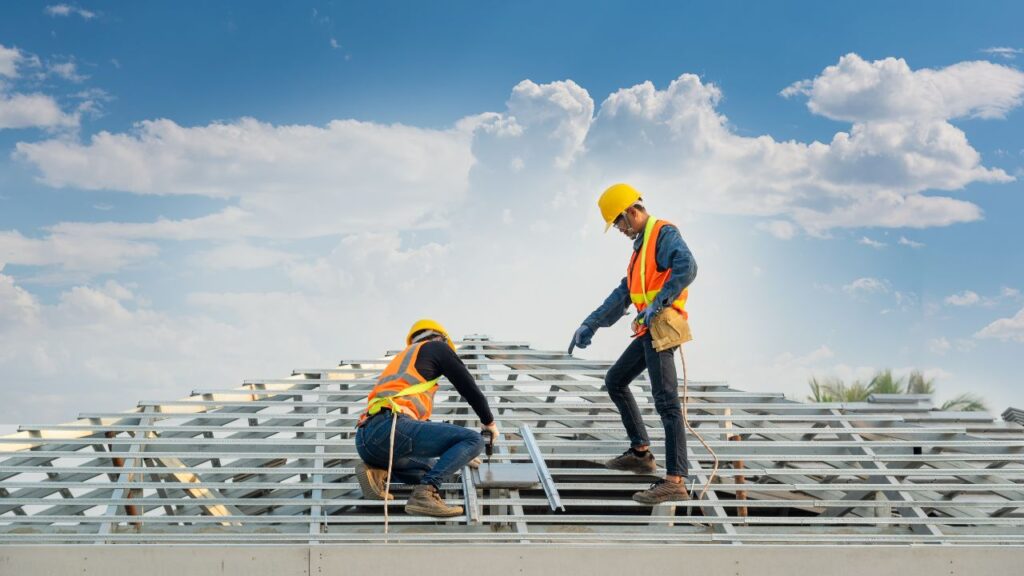
Benefits:
Drawbacks:
Wood Shake Roofs require particular attention when being installed. They can be easily damaged in bad weather, so maintenance is needed. In damp climates, moss can build up. Zinc or copper strips can help with this.
Pro Tip: Select pressure-treated or naturally rot-resistant wood for your Wooden Shake Roof for a longer lifespan. Wishing costs would go down when more factors are added!
We help contractors find new customers with high-converting websites and locally targeted niche-specific lead-generation programs. You’ll never need to worry about running out of work again! We focus on quality over quantity with our leads for contractors.

To better understand the cost of your roofing installation, you need to consider the various factors affecting it. In order to accurately estimate the cost, you should keep in mind the roof size, type, pitch, and the underlayment. Additionally, you also need to pay attention to tear-off and disposal costs as well as the labor costs associated with the installation.
The size of the roof is a big factor when it comes to installation costs. The bigger the roof, the more it costs. This is because more materials and equipment are needed.
Roof size has a huge impact on installation costs. To get an exact cost, contractors measure the length and width of the roof. This gives them the total area which they multiply together.
Accessibility of the roof can also affect the price. If the roof has high slopes or other features that make it hard to get around, you may have to pay more. This could involve excavations depending on the problems.
Contractors use comprehensive measurements when estimating costs. It’s not just the overall square footage that matters, but also other factors such as ease of access.
Pro Tip: To get a rough estimate, multiply $5-8 per square foot installed (depending on complexity) by total square feet. And if your roof pitch is really steep, better watch your step!
The ‘Roof Pitch‘ describes the angle or slope of a roof. It affects the amount of materials, labor, and time needed for installation – all of which determine the cost.
A table can show the difference between a steep pitch (e.g. 18/12) and a flat one (e.g. 4/12). Design complexity, local weather, material type, and location all affect the cost too. Homeowners should hire experienced professionals, pick durable but affordable materials, to reduce maintenance and repair costs, and increase their home’s value.
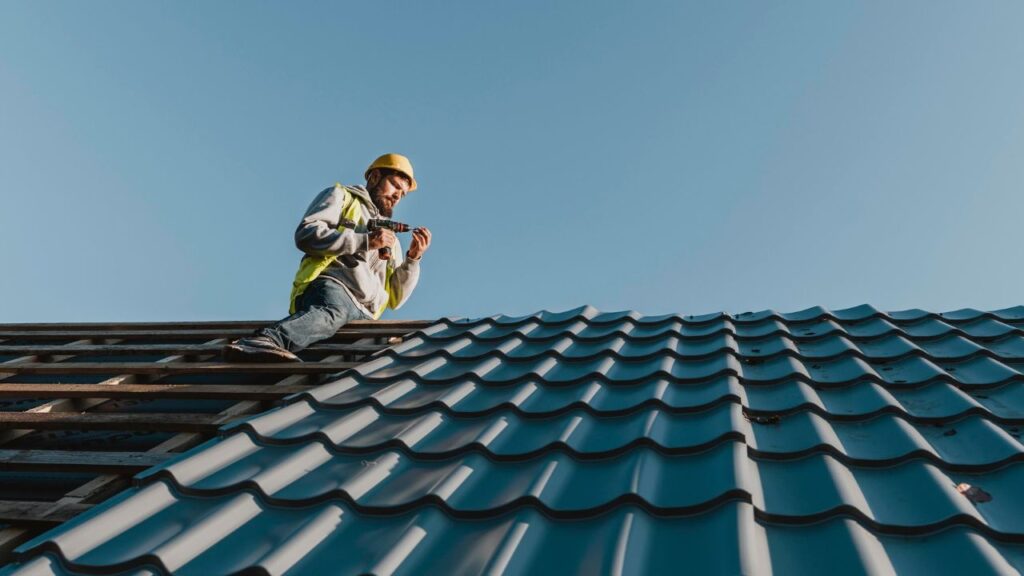
Selecting the right roof is like selecting a hairstyle – consider the cost, maintenance, and how it’ll look later.
Roof type and materials used can have a huge effect on installation cost. It can also influence the look of the building. Cost differences come from design, material used, installation difficulty, and other features. Check out the table below for examples.
Roof Type | Materials Used | Approximate Cost (per sq. ft.) |
|---|---|---|
Flat | PVC or TPO membrane | $5-$10 |
Gable | Asphalt shingles | $2-$4 |
Mansard | Standing seam metal panels | $6-$12 |
Hip | Clay tiles or slate shingles | $20-$30 |
Costs differ significantly between roof types. Select the right one that fits your needs and is affordable.
Climate, structure, and energy efficiency should be taken into account when picking a roofing style. A roofing contractor I know mentioned they went the extra mile for a project involving a complex flat roof system with commercial-grade waterproofing materials. Although it raised the cost, clients were happy with the final product and got an additional five years’ warranty for free. Underlayment is also essential for roofing installation; it’s like a shy superhero hiding under shingles.

An underlayment is an essential part of any roofing system. It shields from water damage, regulates temperature, and makes energy-efficient. Quality, thickness, weight, and material have to be considered to pick the right one. It should be in line with climate conditions, roof deck structure, and roofing material. This makes installation cost-effective, boosts performance, and reduces maintenance costs. If unsure, seek help from a professional. Tearing down an old roof is heartbreaking – and costly!
The cost of roof installation is affected by “Strip-Down and Waste Management”. Here’s what you need to know about it:
Structural repairs may be hidden until tear-off begins. Recycle roofing materials to reduce landfill waste and provide raw material. Make sure your contractor provides a warranty that covers Disposal and Recycling services.
By keeping these tips in mind, you’ll save money and help the environment. Labor costs for roof installation are only high figuratively, not literally.
When installing a roof, the costs of labor are key. These costs vary depending on the type of material, the complexity of the project, and the experience of the team hired. A qualified team is vital for a timely and error-free job. Expertise in building codes and safety regulations is needed. Location, availability, specialization, and contract terms all affect the cost and efficiency of labor.
When planning for roofing installation, remember to include the following in your budget: payroll taxes, worker’s compensation insurance coverage, liability insurance coverages, union dues & benefits (if applicable), travel expenses, bonuses/ incentives, etc.
To reduce labor costs:
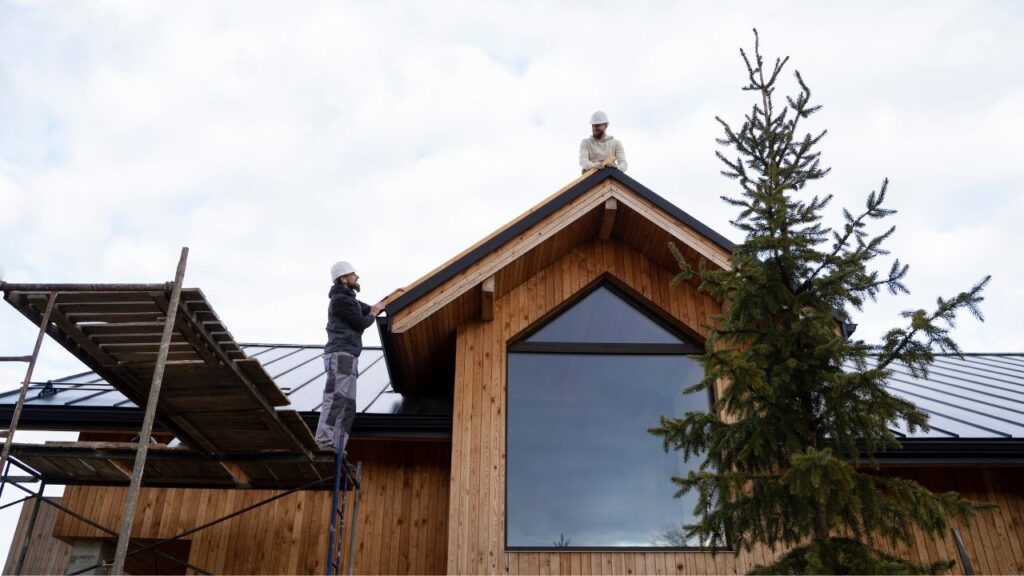
An experienced team boosts quality and cuts costs by avoiding rework. These tips will help ensure a smooth project, however complex. Estimating costs is like guessing how many tiles are in a bag – use your intuition and hope for the best!
To estimate the cost of roofing installation for a new home, you need to accurately measure the roof and determine the required materials. In order to calculate the labor costs, you need to consider extra costs such as permits, cleanup, and disposal, and then add them to the overall estimate. Additionally, potential savings should also be taken into account.
Measuring the roof is essential when calculating installation costs. Accurate measurements help roofing contractors estimate the amount of materials and labor needed to provide a precise quote.
To start, measure the length and width of each section of the roof in feet. Then, multiply the length and width to calculate the area. Add up all areas to get the total square footage.
Also, take pitch into consideration. Measure vertically from the highest point to the lowest point in inches. Divide this by 12 for every 12 inches of horizontal distance to get the pitch value.
Check for any other factors that could affect installation, like old or damaged roofs requiring repairs or removal.
It’s been said that inaccurate measuring of roofs used to be common, leading to inaccurate cost estimations. This hurt the reputation of repairing businesses and increased their debt. Get ready to crunch numbers! Estimating materials for your roofing installation is no easy task.
Maximize your roofing construction business’s potential with our competitive financing options

Knowing the materials required for roofing installation is a must for estimating the cost of the project. Here’s what you should do:
High-quality roofing supplies offer an attractive finish, as well as durability. Make sure to include all the essential steps and don’t compromise on quality. Get expert help to decide your exact requirements.
Be prepared for hard work – calculating roofing costs isn’t easy. Choose wisely!
A few things need to be taken into account to work out labor expenses. These include the size of the project, materials needed, and location of the site. Plus, don’t forget insurance costs or taxes from your workers.
This table will help you estimate labor costs for your next roofing job:
Roofing Project | Labor Cost Per Square Foot |
Reroofing with Asphalt Shingles | $2-5 per square foot |
Tile Roof Installation | $7-13 per square foot |
Metal Roof Installation | $5-10 per square foot |
Use this table as a reference. But remember, different projects may require different levels of expertise, which could affect labor costs.
Your roofing contractor can give you more accurate information, based on your region and what you need.
To save on your roofing installation project, get bids from several local contractors. Compare prices and quality of service, to find a good deal.
Remember, Labor Cost must be included in every job estimate. Otherwise, it’ll lead to wrong predictions and loss of earnings.
Why not add extra costs? Transform your house into a money pit!
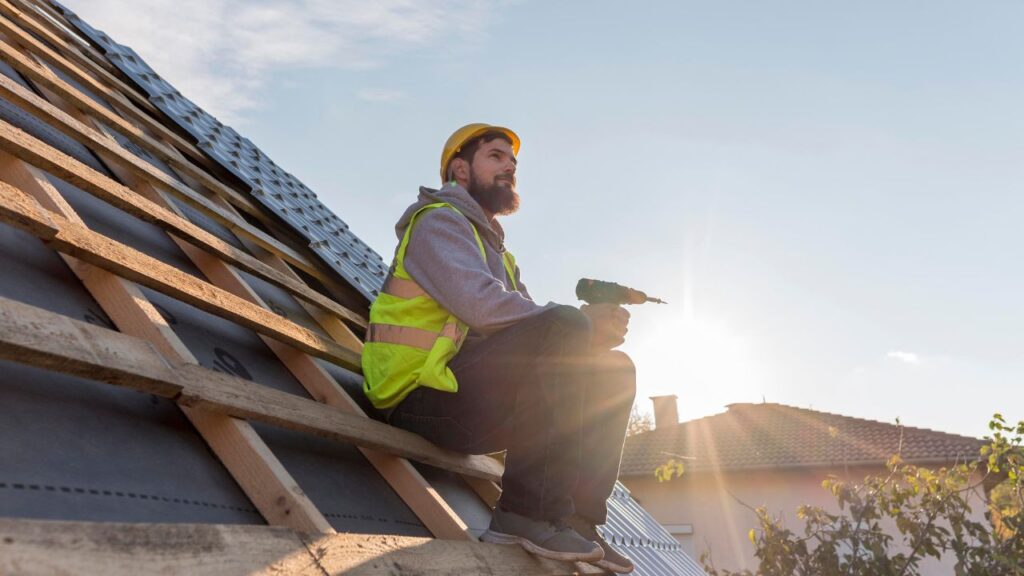
When figuring out the cost of a roof installation, don’t forget to take into account extra expenses that may not be easily seen. Here’s a few to remember:
It’s best to be aware that each roof and situation is different, so there may be particular costs for your job that need to be considered. Get a detailed estimate from your roofing contractor.
One homeowner was shocked when their insurance company only paid part of their new roof installation, leaving them with some extra costs. It’s essential to review insurance coverage before starting any roof work.
Save yourself money in the future by investing in a great roof installation now.
Want to save money on roofing installation? Here are a few ways:
Check out financing, insurance benefits, and tax credits too! Those could reduce your costs significantly. Don’t miss out – research or consult with roofing professionals.
Make your roofing installation worthwhile and budget-friendly. Start considering potential savings now!

To hire a professional roofer for roofing installation, you need to research local roofing companies, request quotes from multiple contractors, check licensing and insurance, and review contracts and warranties. These sub-sections will provide you with the solution you need to find a trustworthy and reliable roofer who can estimate the cost of roofing installation for your new home.
Conduct keyword research online and check local business listings to find a qualified roofing company nearby. Ask friends and family for their experiences with local contractors. Make sure they have the right insurance and license. Read reviews and check pricing. Research materials to pick the best quality within budget and time constraints. Now get ready for a bidding war as contractors compete for your roof-fixing job!
When searching for a roofer, it is wise to obtain quotes from more than one pro. Here is a 3-step guide:
It’s important to consider a contractor’s experience with similar projects. Don’t just go with the cheapest option – quality workmanship is key.
Get quotes from multiple contractors to ensure you get the best deal. Don’t forget – hiring an uninsured roofer is risky.
Verify the roofer’s credentials are all up-to-date and valid. This guarantees their credibility and protects you from any future problems. Experienced roofers should have a state-issued license and certifications for specific tasks like repainting roofs and installing solar panels. This knowledge ensures they are equipped with current practices needed to deliver high-quality, safe jobs.
Also make sure their insurance policies are still valid before offering employment. Reviewing contracts may not be exciting, but it’s as important as skydiving for a safe roof landing.
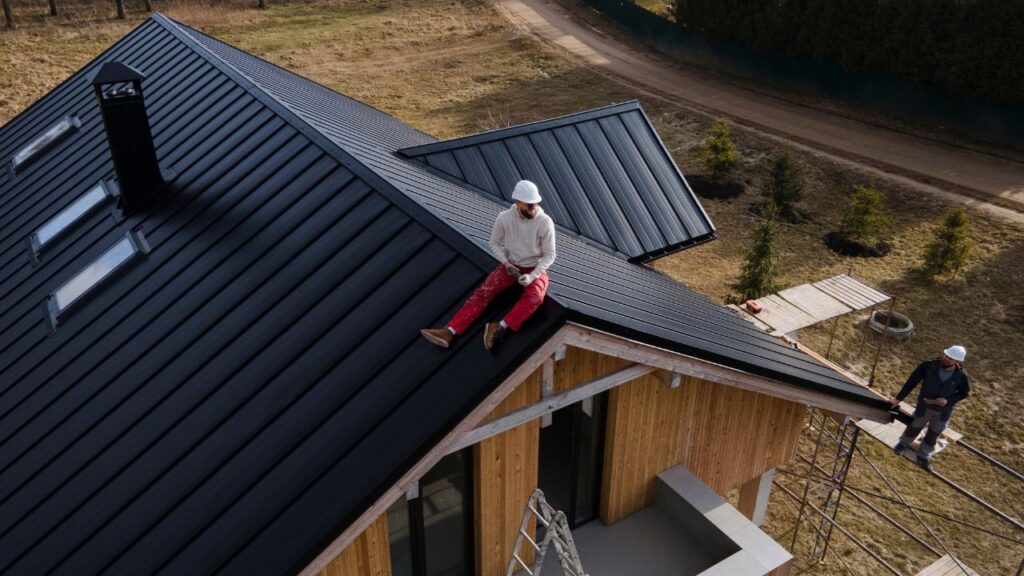
It’s crucial to review all legal documents when hiring a roofer, such as the terms and warranties in the contract. These can be complex and have industry jargon. Here’s a table of details to consider:
Points to Consider | Details |
|---|---|
Contractual Work | List of work, timelines, and payment schedule |
Material | Type, brand, model number, quantity, colour of materials used |
Labor/Workmanship | Warranty for labor/workmanship provided by the roofer |
Manufacturing Warranty | Evidence of manufacturer’s warranty for products |
You must review these details before signing the contract. It’s a legally binding agreement and any problems or clauses could lead to costly legal action.
My colleague made a costly mistake of not reading the contracts properly and ended up with expensive upgrades and materials. Don’t neglect these aspects when hiring a pro – you don’t want your home to become a birdhouse!

It’s essential to comprehend the cost of roofing installation for a new home fluctuates, based on distinct factors. For instance, structural design, age, pitch, location, materials used and workforce required. Identifying these variables is key before beginning any project.
Look into material possibilities such as asphalt shingles, clay tiles, metal panels and more. Make sure to hire competent contractors who’ve worked on similar projects in your area. Also, look out for hidden costs like permits or equipment not included in initial estimates.
Ensure measurements taken by contractors are precise to get accurate quotes. Research financing options, e.g. bank loans or government-backed programs, if you don’t have much funds or can’t pay upfront.
In conclusion, understanding these decisive factors while estimating roofing installation costs will help devise practical plans and budgets.
The cost of roofing installation for a new home can vary greatly depending on the type of materials used, the size of the roof, and the complexity of the design. The best way to estimate the cost is to get a quote from a professional roofing contractor.
The main factors to consider when estimating the cost of roofing installation are the size and shape of the roof, the type of roofing materials used, the location of the home, and the complexity of the installation process.
Yes, there are a few ways to save money on roofing installation. One way is to choose less expensive materials such as asphalt shingles rather than metal or tile. Another way is to have the work done during the offseason when contractors may offer lower rates.
The duration of roofing installation varies depending on the size of the roof and the complexity of the design. On average, though, you can expect it to take around 2-3 days for a typical residential roof installation.
There are a variety of roofing materials available for new home installations, including asphalt shingles, metal, tile, and wood shingles. Each material has its own advantages and disadvantages, so it’s best to consult with a roofing professional to determine which one is best for your home.
The best way to determine if your new home needs a new roof installation is to have it inspected by a professional roofing contractor. Signs that a new roof may be needed include leaks, cracks, missing or damaged shingles, and signs of wear and tear.
Here I am going to share some steps to get your flooring construction cost estimate report.
You can send us your plan on info@estimatorflorida.com
Before starting your project, we send you a quote for your service. That quote will have detailed information about your project. Here you will get information about the size, difficulty, complexity and bid date when determining pricing.
We do flooring construction cost estimating and prepare a detailed report for your project. At last, you finalize the report and finish the project.
561-530-2845
info@estimatorflorida.com
Address
5245 Wiles Rd Apt 3-102 St. Pete Beach, FL 33073 United States
561-530-2845
info@estimatorflorida.com
Address
5245 Wiles Rd Apt 3-102 St. Pete Beach, FL 33073 United States
All copyright © Reserved | Designed By V Marketing Media | Disclaimer
IMPORTANT: Make sure the email and cell phone number you enter are correct. We will email and text you a link to get started.
By clicking “I Agree” above you give Estimate Florida Consultin express written consent to deliver or cause to be delivered calls and messages to you by email, telephone, pre-recorded message, autodialer, and text. Message and data rates may apply. You are able to opt-out at any time. You can text STOP to cancel future text messages.